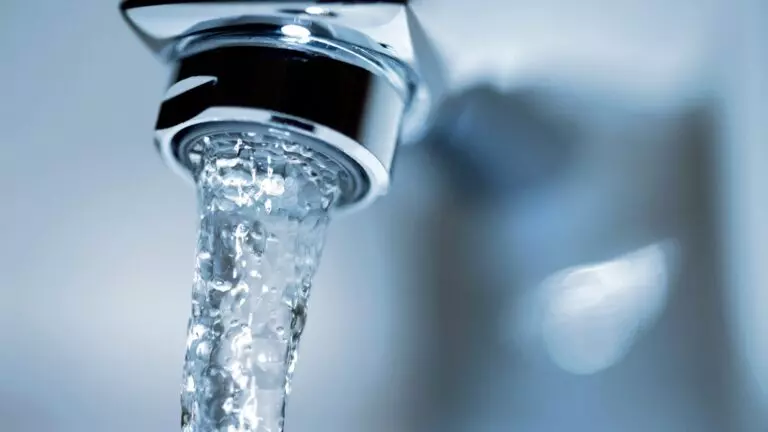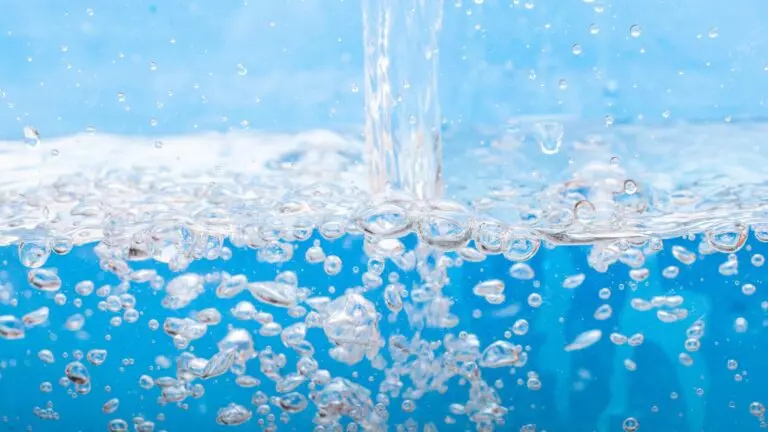How Reverse Osmosis Works to Ensure Safe Drinking Water
Clean and safe drinking water is a fundamental necessity for human life. Reverse Osmosis (RO) is a remarkable water purification technology that plays a crucial role in providing us with clean and pure drinking water.
Wycombe Water explores how Reverse Osmosis works, its applications, and the benefits it offers in ensuring our access to safe and healthy water.
Understanding Reverse Osmosis
Reverse Osmosis, often abbreviated as RO, is a water purification process that removes impurities and contaminants from water by using a semi-permeable membrane.
“Osmosis is the passage or diffusion of water or other solvents through a semipermeable membrane that blocks the passage of dissolved solutes” [source: Encyclopaedia Britannica].
The process is called “reverse” osmosis because it reverses the natural osmosis process, the movement of solvent molecules from an area of lower solute concentration to an area of higher solute concentration. In RO, pressure is applied to force water through the membrane, leaving behind contaminants and producing purified water.
The RO Process
Before water enters the RO system, it typically goes through a pre-filtration stage to remove larger particles such as sediment, debris, and chlorine. This step helps protect the semi-permeable membrane from damage.
Using prefiltration will help to reduce your overall operating costs by extending the life of the semi-permeable membrane (filter).
To initiate the RO process, water is pressurised using a pump. The pressure applied must be greater than the osmotic pressure to push water through the semi-permeable membrane.
“Osmosis is in fact a kind of diffusion, and it’s the nature of the membrane that makes the difference between diffusion and osmosis.” [University of Nottingham]
The heart of the RO system is the semi-permeable membrane. This membrane has tiny pores that are so small that they allow only water molecules to pass through while blocking impurities like minerals, salts, bacteria, and viruses.
“A semipermeable membrane is a layer that only certain molecules can pass through. Semipermeable membranes can be both biological and artificial. Artificial semipermeable membranes include a variety of material designed for the purposes of filtration, such as those used in reverse osmosis, which only allow water to pass.” [Biology Dictionary]
As pressurised water is forced through the membrane, impurities are trapped and removed, while the purified water emerges on the other side.
“Reverse Osmosis (RO) filters use membrane technology to filter impurities such as minerals, calcium, chloride, sodium, and chlorine from the water.” [Alliance for Water Efficiency]
Then the purified water is collected for use, while the concentrated impurities, referred to as brine or reject water, are discharged. This discharge process helps maintain the efficiency of the system and prevents the buildup of contaminants.
“Reverse Osmosis (RO) systems require periodic backwash to clean the filter. This discharge water is usually directed to the sewer drain line, but it can be recovered and used. Since the discharge water from an RO system is only slightly less pure than the source water entering the filter, it can … suitable for irrigation or other alternate reuse applications.” [Alliance for Water Effciency].
Applications of Reverse Osmosis
Reverse Osmosis technology finds applications in various fields, including:
- Residential Water Purification
Many households use reverse osmosis systems to ensure clean and safe drinking water. These systems can be installed under sinks or connected to the main water supply. - Desalination
Reverse osmosis is instrumental in the desalination of seawater, converting it into fresh and potable water. This process is essential in regions with limited freshwater resources. - Industrial Processes
Numerous industries, such as pharmaceuticals, food and beverage, and electronics, rely on reverse osmosis for purifying water used in manufacturing and processes. - Wastewater Treatment
Reverse osmosis is employed to treat and purify wastewater, making it suitable for reuse in various applications, including irrigation and industrial processes. - Medical and Laboratory Applications
Laboratories and healthcare facilities use reverse osmosis to obtain ultra-pure water for experiments, medical equipment, and sterilisation.
Benefits of Reverse Osmosis
Conclusion
Reverse Osmosis is a revolutionary technology that plays a pivotal role in providing clean and safe drinking water to households, industries, and communities around the world. By reversing the natural osmosis process, RO systems effectively remove impurities and contaminants, ensuring the availability of high-quality water for various applications. The benefits of reverse osmosis extend beyond purity and safety, offering environmental, health, and economic advantages. As the world continues to face water quality challenges, reverse osmosis remains a vital solution to meet our growing need for clean and pure water.





